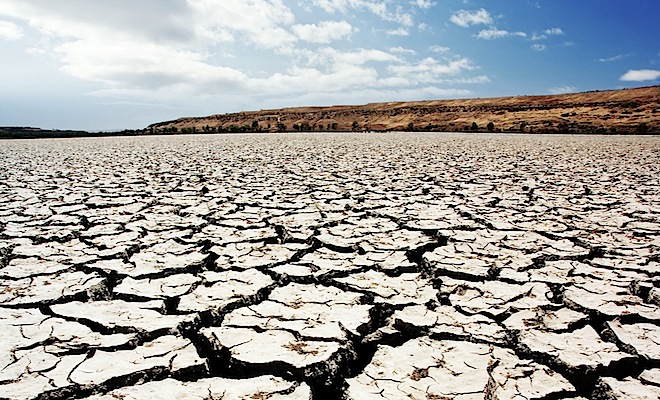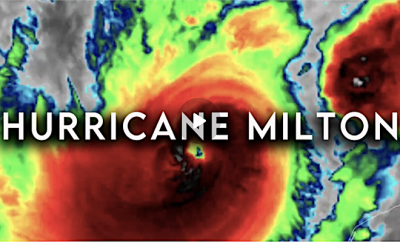 Phot source: utilitydive.com
Phot source: utilitydive.com
Geo Watch
The Sixth Great Mass Extinction Event Begins
2015 on Pace to Become Hottest Year on Record
by Dahr Jamail, Information Clearing House:
At the end of May, a few friends and I opted to climb a couple of the larger volcanoes in Washington State. We started on Mount Adams, a 12,280-foot peak in the southern part of the state.
We were able to drive to the Cold Springs Campground at 5,600 feet, where the climb would begin. This itself was an anomaly for late May, when the dirt road tended to still be covered with snowpack. But not this year, one in which Washington’s Gov. Jay Inslee has already declared a statewide drought emergency, given this year’s record-low snowpack.
A few days later and much further north on Mount Baker, a 10,781-foot glacial-clad volcano not far from the border of Canada, we experienced the same thing. We camped on terra firma at around 5,500 feet, in an area that normally would have found us camping on several feet of snowpack. When we headed up the peak, the route was already in late season (August) conditions. We found ourselves having to navigate around several large open crevasses where snow bridges that had offered access had already collapsed due to rising temperatures and melting snow.
During our descent after visiting the summit, two of my climbing partners punched through snow bridges over crevasses, and the lower part of the route was more like a Slurpee than a glacier. I would not have wanted to be on the mountain a day later than we were.
The signs of the increasing rapidity and intensification of our warming planet are all around us. And bigger-picture reports, studies and warnings are multiplying every day.
NASA recently released its global temperature data for the month of May, and it was 1.3 degrees Fahrenheit above the norm. The agency’s data also revealed that 2015 has had the hottest five months of any year ever recorded. As of right now, 2015 is already hotter than last year, according to NASA; in fact, if it stays on the same track, it will be the hottest year ever recorded for the planet.
Things are bad enough that President Obama’s science adviser issued a warning that anthropogenic climate disruption (ACD) is currently barreling forward so quickly that the entire state of California could be “overwhelmed”: The state’s efforts to adapt will be unable to keep pace with the rapidly intensifying developments on the ground. Essentially, this means the state does not have the financial nor physical resources to keep pace with rising seas, drought and wildfires that are all becoming the norm there.
Scientists like Bill Nye (“the Science Guy”) are warning us to expect even more weather extremes as ACD progresses. For example, they predict the recent deluge of rain and flooding in Texas will become the norm for that state going forward.
A study recently published in Nature Climate Change has shown that if carbon dioxide and methane emissions are not dramatically cut extremely rapidly, ACD is set to bring about the most dramatic and encompassing rearrangement of ocean species in at least the last 3 million years. For example, the study shows that by 2100, the polar regions, which currently host some of the most diverse and widespread sea life on the planet, will likely be drained of much of their marine life.
It’s not news that Arctic sea ice is melting at a record-breaking pace and that the odds of there being summer ice-free periods by next year are high. But an interesting twist resulting from this development is that this thinning Arctic ice, along with a lack of air support, has officially forced an end to trekking expeditions to the North Pole this year … and quite likely, forever.
All of these changes are portentous.
However, the most important development this month is clearly a recently published study in Science that states, unequivocally, that the planet has officially entered its sixth mass extinction event. The study showed that species are already being killed off at rates much faster than they were during the other five extinction events, and warned ominously that humans could very likely be among the first wave of species going extinct.
The lead author of the study, Gerardo Ceballos of the Universidad Autónoma de México, told reporters that if current rates of ACD, deforestation and pollution are allowed to continue, “Life would take many millions of years to recover, and our species itself would likely disappear early on.”
Another alarming feature of the study is that it is admittedly conservative. On page three it states: “We emphasize that our calculations very likely underestimate the severity of the extinction crisis.”
Study co-author Paul Ehrlich, a Bing professor of population studies in biology and a senior fellow at the Stanford Woods Institute for the Environment, told Stanford News, “[The study] shows without any significant doubt that we are now entering the sixth great mass extinction event. There are examples of species all over the world that are essentially the walking dead.”
As we explore ACD’s impact upon the four quadrants of the planet this month, we see developments that certainly confirm the aforementioned report’s findings.
Earth
As warming from ACD continues to fuel increases in diseases and pests, moose in North America are dying by the thousands, according to a recent scientific report.
Another report revealed recently that the warming waters in Long Island Sound are dramatically altering fish populations, as summer flounder and sea bass that usually prefer warm water are now appearing in the northern locale.
As California’s mega-drought lumbers on, redwoods and other iconic trees in that state are now dying in record numbers. As one example, Monterey pines – in one area that covers nearly 15 square acres – are already as much as 90 percent dead.
Even more disturbing is a recent report that polar bears have been seen killing and eating dolphins. That in itself isn’t news, but the fact that it happened this spring, instead of during the warmer summer months, has never been seen before.
Water
Recent NASA data has given us some remarkable graphics that show how the world’s aquifers are losing their water at “alarming” rates, according to scientists. The data shows that more than half of the planet’s 37 largest aquifers are being depleted. Given that the groundwater reserves take thousands of years to accumulate, one of the scientists described the situation as “critical.”
São Paulo, Brazil, a mega-city of over 20 million people, has been pushed to the verge of severe water rationing, as its largest water reservoir is on pace to dry up completely by August.
In Chile, most of the ski areas have completely bare slopes. Santiago, which sits below all the ski resorts, has seen a scant 1.2 centimeters of rain this year, which is a jaw-dropping 86 percent less than normal.
North Korea is facing its worst drought in recorded history, which has sparked fears of a worsening of already severe food shortages.
The worst regional drought in nearly 10 years is hammering southern Africa, causing Zimbabweans to go hungry as crop failure has become rampant. The drought threatens to persist.
Meanwhile Nicaragua, the country with the most abundant water sources in its region (it even has the word “agua” as part of its very name), is experiencing one of its worst water shortages in five decades.
In the United States, a record drought in Oklahoma has given wheat farmers there a glimpse of what is to come, although recent wet weather has ended the drought for now. Scientists are warning that the region should brace itself for a growing number of hotter, drier days in the future.
Farms in Utah are being wracked by drought, as officials in that state have begun rationing water, causing farmers there to worry about even more cutbacks as summer progresses.
In California, the Salton Sea – the largest lake in the state – is drying out of existence, giving us another indicator of how deep the drought is now embedded in the state’s climate.
In monetary terms, a recent report shows that California’s drought has taken at least a $2.7 billion toll on the state’s agriculture. Obviously, that number is sure to continue to rise.
As is happening globally now, residents in some towns in central California are suffering from a health crisis that stems from not having running water and breathing increasingly dusty air, due to the drought. Respiratory problems are becoming rampant throughout the state.
In Canada, John Pomeroy, the director of the Centre for Hydrology at the University of Saskatchewan, recently spent time high up in the Rocky Mountains, along the British Columbia-Alberta divide. He witnessed clear signs of the highly damaging drought plaguing his country. Due to record dry spells, dramatically decreased river flows and the shortage of runoff water, Pomeroy said that western Canada is likely in the midst of a long-term drought.
The flip side of the water climate coin is flooding. In the United States, unprecedented amounts of rainfall across Texas and Oklahoma recently are evidence of what happens when a warming atmosphere becomes saturated with more water vapor than it used to be able to hold: yet another harbinger of our future.
Thus, it comes as no surprise that the latest National Oceanic and Atmospheric Administration report showed that this May was the wettest month ever recorded in the United States, despite the mega-drought in California and the West. Obviously, scientists have linked these phenomena to ACD.
Dramatic changes are happening in most of the planet’s highest places, given the rapidly accelerating melting of glaciers. Even Mount Everest, the highest point on earth, is witnessing massive changes. A recent report in the journal The Cryosphere found that thousands of glaciers across the Himalayas will likely shrink by 70 to 99 percent by 2100.
Thus, by the end of the century, it is feasible that Mount Everest could be entirely without glaciers.
Another recent study linked intensifying weather events – like the extreme cold that wracked the eastern United States last winter and spring, along with the record flooding that hit Britain – to the rapid loss of Arctic ice. This doesn’t bode well, as the Arctic summer sea ice will likely begin to vanish entirely for short periods, starting as early as next summer.
A unique photography project in Alaska has captured ACD impacts over time in a stunning way. The photos are hard to look at, but everyone should see them. They represent a kind of before-and-after view of what ACD is doing to one of the most beautiful areas on the planet. The project shows dramatically reduced glacial coverage in multiple areas of Alaska, including areas that used to be heavily glaciated, which are now completely ice-free.
The project became even more relevant when a recent report was published that shows how glaciers in Alaska have lost 75 gigatons (75 billion metric tons) of ice per year, from 1994 through 2013.
In comparison, this number is roughly half of the amount of ice loss for all of Antarctica (159 billion metric tons). This new data also indicates that the Alaska region alone likely contributed several millimeters to the global sea level rise in the past few decades.
Air
The changing chemistry of the planet’s atmosphere is causing new positive feedback loops to occur. For example, in Mexico City, warmer temperatures are exacerbating the already horrible smog in that mega-city, as higher temperatures mean that industrial pollutants are released more rapidly into the air.
Read More @ InformationClearingHouse.com












